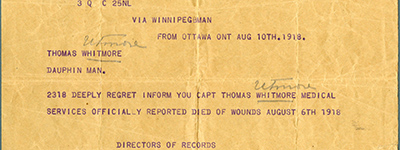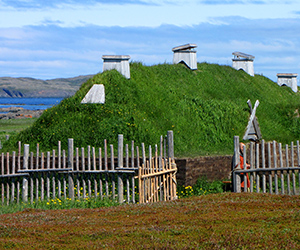CANADA HISTORY - Govenors General
The Marquess of Lorne

John Douglas Sutherland Campbell, 9th Duke of Argyll, also known as the Marquis of Lorne, was Canada’s fourth Governor General after Confederation, serving from 1878 to 1883. A Scottish aristocrat, politician, and writer, the Marquis of Lorne brought a passion for culture, literature, and the arts to his role. His appointment marked a significant chapter in Canadian history, not only because of his own notable accomplishments but also due to the presence of his wife, Princess Louise, the daughter of Queen Victoria. Their time in Canada helped to promote Canadian unity, foster the arts, and highlight the growing sense of national identity.
Early Life and Education
John Douglas Sutherland Campbell was born on August 6, 1845, at Stafford House, London. He was the eldest son of George Douglas Campbell, the 8th Duke of Argyll, a prominent politician and intellectual, and Elizabeth Georgiana Leveson-Gower. As the heir to one of Scotland’s most powerful aristocratic families, young John grew up in an environment rich in political and cultural engagement. The Campbells, as the head of the Clan Campbell, wielded considerable influence both in Scotland and within the British Empire.
The Marquis of Lorne received an elite education, attending Edinburgh Academy, Eton College, St. Andrews University, and Trinity College at Cambridge. His early exposure to literature and politics helped shape his intellectual pursuits, and he developed a deep love for the arts, including poetry and prose. Lorne’s academic and cultural development was complemented by his political ambitions, and in 1868, at the age of 23, he was elected as the Member of Parliament for Argyllshire.
Marriage to Princess Louise and Appointment as Governor General
One of the most significant milestones in Lorne’s life was his marriage to Princess Louise, the fourth daughter of Queen Victoria, in 1871. This union elevated his status within British aristocracy and brought him closer to the royal family. The couple’s marriage was significant not only because it connected Lorne to the monarchy, but also because Princess Louise was known for her progressive ideas and her active involvement in the arts. She was a talented sculptor, painter, and writer, and her creative interests aligned closely with her husband’s.
In 1878, at the age of 33, the Marquis of Lorne was appointed Governor General of Canada, following in the footsteps of three Irishmen who had previously held the post. His appointment was seen as a bold choice, given that he was relatively young and inexperienced in colonial administration. Moreover, his marriage to a royal princess caused some apprehension in Canadian political circles, with fears that Rideau Hall would become an overly formal and royal court. However, these concerns were quickly dispelled, as the Marquis and Princess Louise proved to be approachable, friendly, and genuinely interested in Canadian life.
Life at Rideau Hall and Relationship with Canadians
The Marquis of Lorne and Princess Louise endeared themselves to Canadians through their genuine warmth and informality. They quickly dispensed with the rigid formality that had been expected, opting for more casual gatherings, outdoor activities, and frequent travels. The couple was particularly fond of fishing, playing outdoor sports, and exploring Canada’s natural beauty.
The Marquis’ extensive travels across Canada were one of the hallmarks of his time in office. In 1881, he undertook a remarkable 8,000-mile journey from Halifax to Fort Macleod in Alberta, during which he visited many remote areas and met with Indigenous peoples. His ability to speak with familiarity about Canadian geography, places, and communities, particularly in the western frontier, endeared him to the public. His journeys helped to strengthen national unity and promote the idea of Canada as a vast, diverse, and unified country, connected by both railways and shared ideals.
Contributions to Canadian Culture and the Arts
Lorne’s governorship coincided with a period of growing national identity and cultural development in Canada. His love for literature and the arts made him a natural champion for Canadian artists and intellectuals. One of his most significant cultural contributions was the founding of the Royal Society of Canada in 1882. This organization, modeled after similar learned societies in Britain, aimed to promote the arts, literature, and sciences in Canada, and remains one of the country’s most prestigious institutions.
Lorne was also instrumental in the creation of the Royal Canadian Academy of Arts and the establishment of what would eventually become the National Gallery of Canada. He personally selected the first collection of artworks that would form the nucleus of the National Gallery, and his efforts helped to elevate the status of Canadian artists on the world stage.
A writer and poet himself, Lorne produced a considerable body of work during his time in Canada. His writings about Canada, including prose and poetry, reflected his admiration for the country’s natural beauty and its people. His literary efforts helped to foster a sense of Canadian identity and pride during a time when the country was still coming to terms with its place within the British Empire.
The Riel Rebellion and Political Challenges
Although the Marquis of Lorne’s tenure as Governor General was generally peaceful and prosperous, there were challenges, particularly in the political realm. One of the most significant events during his time in office was the emergence of tensions surrounding Métis leader Louis Riel. Riel, who had previously led the Red River Rebellion in 1869-1870, had returned to Canada in the early 1880s to advocate for the rights of the Métis and Indigenous peoples in the Northwest Territories.
The tensions surrounding Riel’s activities would eventually culminate in the North-West Rebellion of 1885, shortly after Lorne’s term as Governor General ended. Although Lorne himself did not have to manage the rebellion, the political unrest and rising discontent in the west were issues he observed closely during his travels. His familiarity with the western provinces and his interactions with Indigenous leaders provided him with insight into the challenges facing the region.
Return to England and Later Life
The Marquis of Lorne’s term as Governor General ended in 1883, and he and Princess Louise returned to Britain, where he resumed his political and public service career. Shortly after his return, Lorne was elected as a Member of Parliament for South Manchester, and he continued to serve in various capacities within the British government. In 1900, upon the death of his father, Lorne succeeded to the title of Duke of Argyll, becoming the 9th Duke.
Throughout his later life, Lorne remained active in public affairs and continued to champion the arts. He was a strong advocate for the preservation of historic buildings and sites in Scotland, and his work in this area helped to shape the early conservation movement in the United Kingdom.
Legacy in Canada
John Douglas Sutherland Campbell, the Marquis of Lorne, left a lasting legacy in Canada, particularly in the areas of culture, arts, and national unity. His establishment of the Royal Society of Canada and the Royal Canadian Academy of Arts helped to elevate Canadian intellectual and artistic achievements and provided a foundation for the country’s cultural institutions. His travels across the country, including his visits to remote areas and Indigenous communities, helped to bridge the geographical and cultural divides that often separated different regions of Canada.
Perhaps most importantly, Lorne and Princess Louise demonstrated that the Governor Generalship could be a position of genuine engagement with Canadian society, rather than merely a ceremonial role. Their informality, warmth, and genuine interest in the lives of Canadians helped to humanize the office and set a standard for future Governors General.
The Marquis of Lorne’s contributions to Canadian arts and culture, along with his efforts to promote national unity, ensured that his time in Canada would be remembered as a period of growth and cultural development. His legacy endures through institutions such as the Royal Society of Canada and the National Gallery, and his name is commemorated in places like the Lorne Building in Ottawa and the town of Lorne in Manitoba.
John Douglas Sutherland Campbell, the Marquis of Lorne, brought a unique combination of intellect, cultural passion, and political acumen to his role as Canada’s fourth Governor General. His deep love for the arts, his extensive travels across the country, and his dedication to promoting Canadian unity and identity left an indelible mark on the nation. Lorne’s legacy as a champion of Canadian culture and his efforts to bridge the divides within the country continue to resonate in Canada today. His governorship is remembered as a time of cultural growth, national exploration, and the forging of a more unified Canadian identity.
Cite Article : Reference: www.canadahistory.com/sections/documents/documents.html
Source: NA



